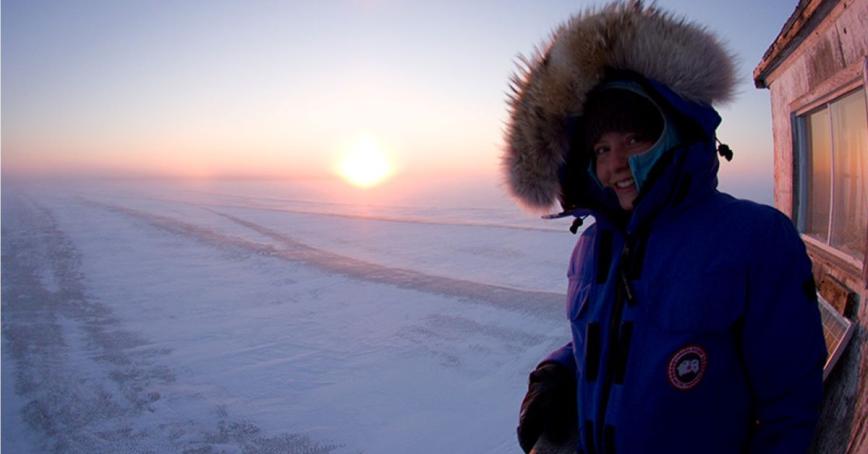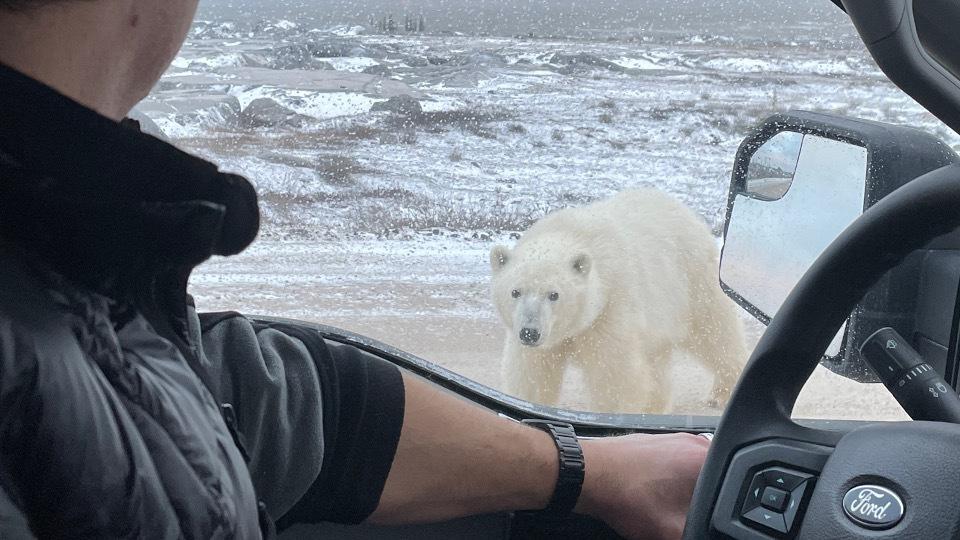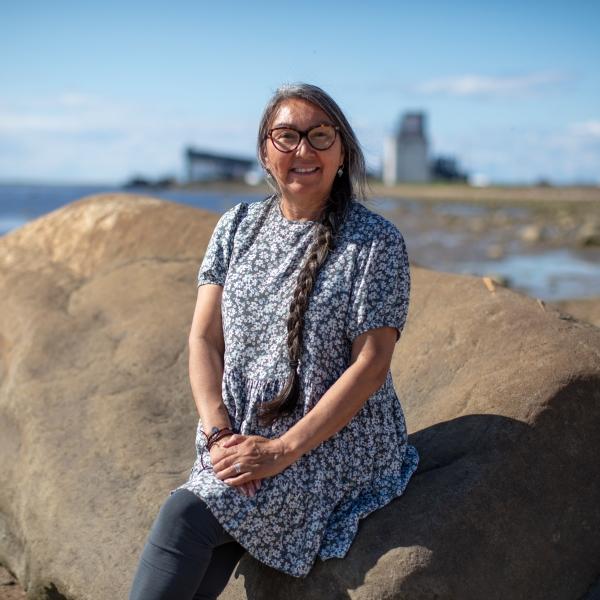Polar bears + people: a study of coexistence
Topics
Featured
Share online


Learn more about the Master of Arts in Interdisciplinary Studies program or request more information.
A Royal Roads University student combined her education and her passion for conservation to create a story-based research project focused on how humans and polar bears coexist in a town known for the creatures.
Churchill, located on the shore of Hudson Bay in Manitoba’s far north, is billed as the “Polar Bear Capital of the World” because of the bears’ presence in town at certain times of year, and Kt Miller has been visiting from her home in Montana for more than a decade while working with Polar Bears International. She took photos and video, and helped the non-profit set up and operate livestreaming cameras that catch polar bears and other wildlife in their element.

After meeting a Royal Roads alum through work, Miller enrolled in RRU’s Master of Arts in Interdisciplinary Studies program to study climate change communication and how to motivate people to act on the climate crisis. But the realization that topic had been studied before, combined with what she learned in the course Global Perspectives on Indigenous Ways of Knowing, prompted her to change her plans.
“I kind of took this big turn in my interests and learning where I was just captivated in that course and wanted to dig deeper into how we can learn from Indigenous knowledge,” Miller says.
In developing her thesis — titled Indigenous Knowledge of Human–Polar Bear Coexistence in Churchill, Manitoba — she enlisted as co-researcher Georgina Berg, a Churchill resident, Knowledge Keeper and Cree Elder. She also co-created the project with Indigenous Knowledge Keepers, a group of women who are Swampy Cree, Sayisi Dene, Métis and Caribou Inuit Elders.
"One thing that came through in all of the research is how much [the bears’ presence is] built into people,” Miller says. “It’s this culture of coexistence that people grow up with. A lot of Elders, when they were younger, they didn’t worry about bears at all.”
Storytelling was key in the research project to help to share knowledge that was crucial to the project’s success, says Berg. At the core of Miller’s thesis are the words of Churchill residents, and in addition to her written paper, she and the other researchers created a series of podcasts featuring those residents’ stories hosted on a dedicated website.
“The art of storytelling was revived and it is a really beneficial thing,” Berg says. “Each person at the table had different knowledge than the other people, so they were able to share that.
“It’s always been a practice that Indigenous people have done,” she adds, “and [Kt] was so smart to tune into that.”
Berg also says she hopes the project web site and podcasts will help people understand that “We care very deeply for our polar bears. We have to voice our concerns for the wellbeing of polar bears... It’s the people in the community who have to speak up about it... We do have a voice; we do have authority to say what’s going in our land needs to be cared for.”
While there are safety concerns about polar bears, there is also a tourism industry that revolves around taking visitors to see them.
“Sometimes, environmentalism and economy and Indigenous sovereignty are placed in opposition, whereas in this context with this research project, they really are in tandem and conservation is sort of economy,” says Miller. “And this is unique at this location.”
“It was so, so important for me to have something for the community that communicated back the findings in a way that would be tangible, approachable and understandable,” Miller says. “It’s them sharing their stories instead of me extracting that and recommunicating it back.
“It just created this really beautiful synergy and energy to the whole project that made it really for and by the community.”